How to keep your house warm for less: 15 cost-effective tips and tricks
With rising energy costs many are reluctant to turn the heating up this winter – here's how you can stay snug without costly measures
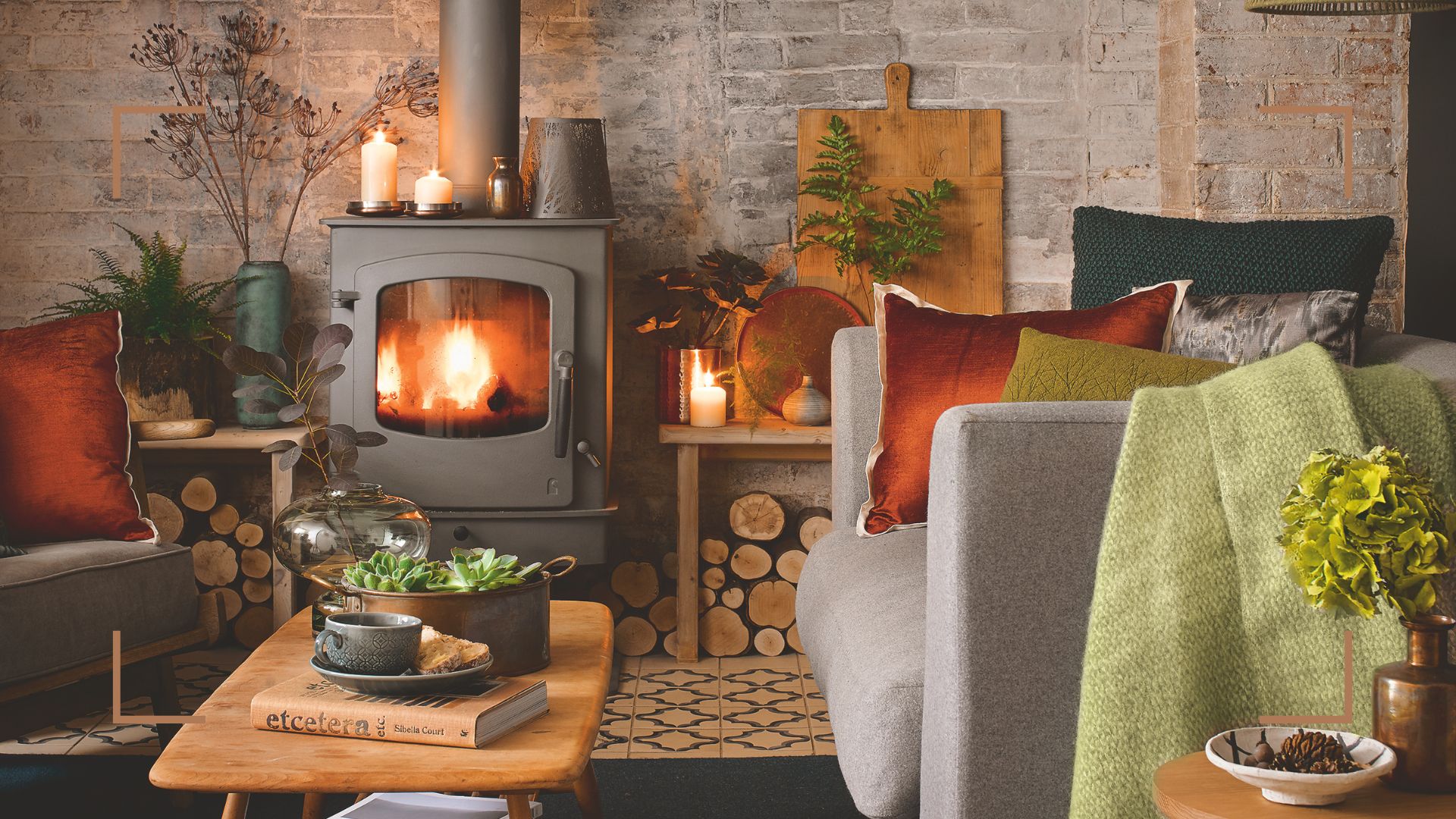

Mastering how to keep your house warm in winter using cost-effective hacks has never been more topical. Staying warm for less will strike a chord with many households this year as we navigate rising energy costs.
Luckily as with how to dry clothes indoors without a dryer, there are plenty of small and affordable ways to create a cosy home and make rooms feel warmer without cranking the heating on full blast or running up huge energy bills by powering electric fan heaters. Many of our tips help to save energy around the home without sacrificing staying warm.
From rearranging furniture layouts and insulating windows to blocking draughts with specialist extractors, there are several easy methods you can adopt to help you stay warm and toasty during the colder months without worrying about utility bills.
How to keep your house warm this winter for less
We spoke to experts in heating and home decor to share their tips on keeping homes warm without using excessive electricity this winter.
“As energy prices continue to soar, it has left many homeowners wondering whether it’s more efficient to keep the heating on at a lower temperature for the day or to turn it off and on again when needed, " says Chris Shaw, CEO at Utility Bidder.
"Although there has been a lot of speculation around this, the best way to save money and energy is to only use the heating when needed and not have it on for the whole day. Depending on how cold a room is, you often only need to have the heating on for a short amount of time to feel the benefits, which means you can turn it off once you feel warm enough, which will save you money."
If you’re reluctant to put the heating on as much as you’d like to this winter, then try these simple hacks to help you heat areas of your home for longer...
Sign up for the woman&home newsletter
Sign up to our free daily email for the latest royal and entertainment news, interesting opinion, expert advice on styling and beauty trends, and no-nonsense guides to the health and wellness questions you want answered.
1. Rearrange the furniture
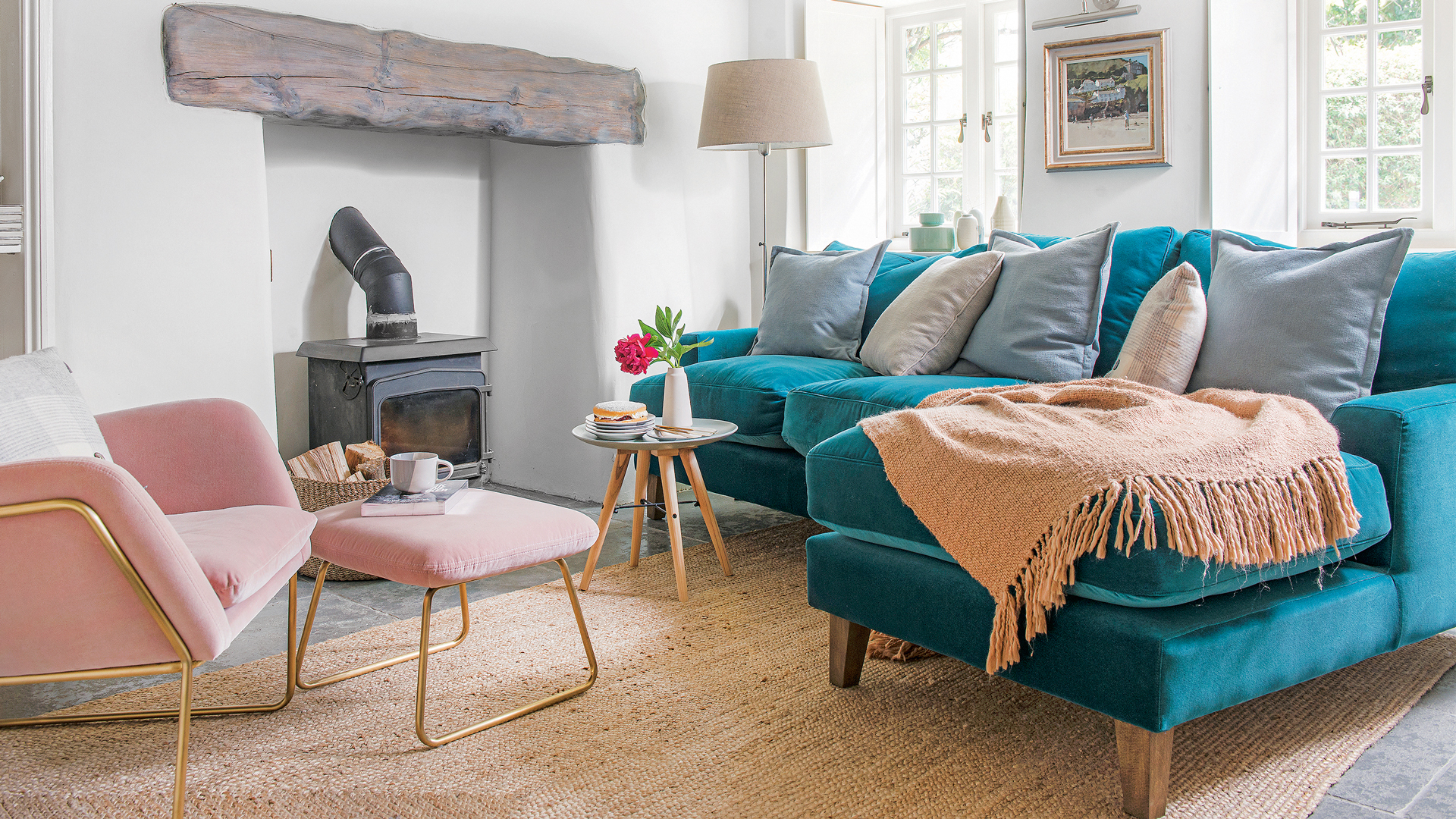
An easy way to instantly improve the heat quality of any room is to rearrange the furniture. Ensure the layout utilises all heat sources.
"If you intend on switching the heating on and you have large items of furniture in front of the radiator, such as a sofa or sideboard, move it to another wall as this is soaking up most of the heat," explains Chris. "By doing this, the radiator is now fully exposed to the rest of the room and will evenly distribute heat."
"Any large furniture such as beds or wardrobes should also be at least 1 foot away from radiators," advises the team at Bed Kingdom. "If your bed is next to an external wall, rearranging your room so your bed is against an internal wall will help you stay warmer."
"Glass is not good for insulating rooms. If your bed is close to a window or external wall, rearranging your furniture so that your bed is away from windows and next to internal walls can be a cost-free way of staying warm at night."
2. Add extra layers of soft furnishings
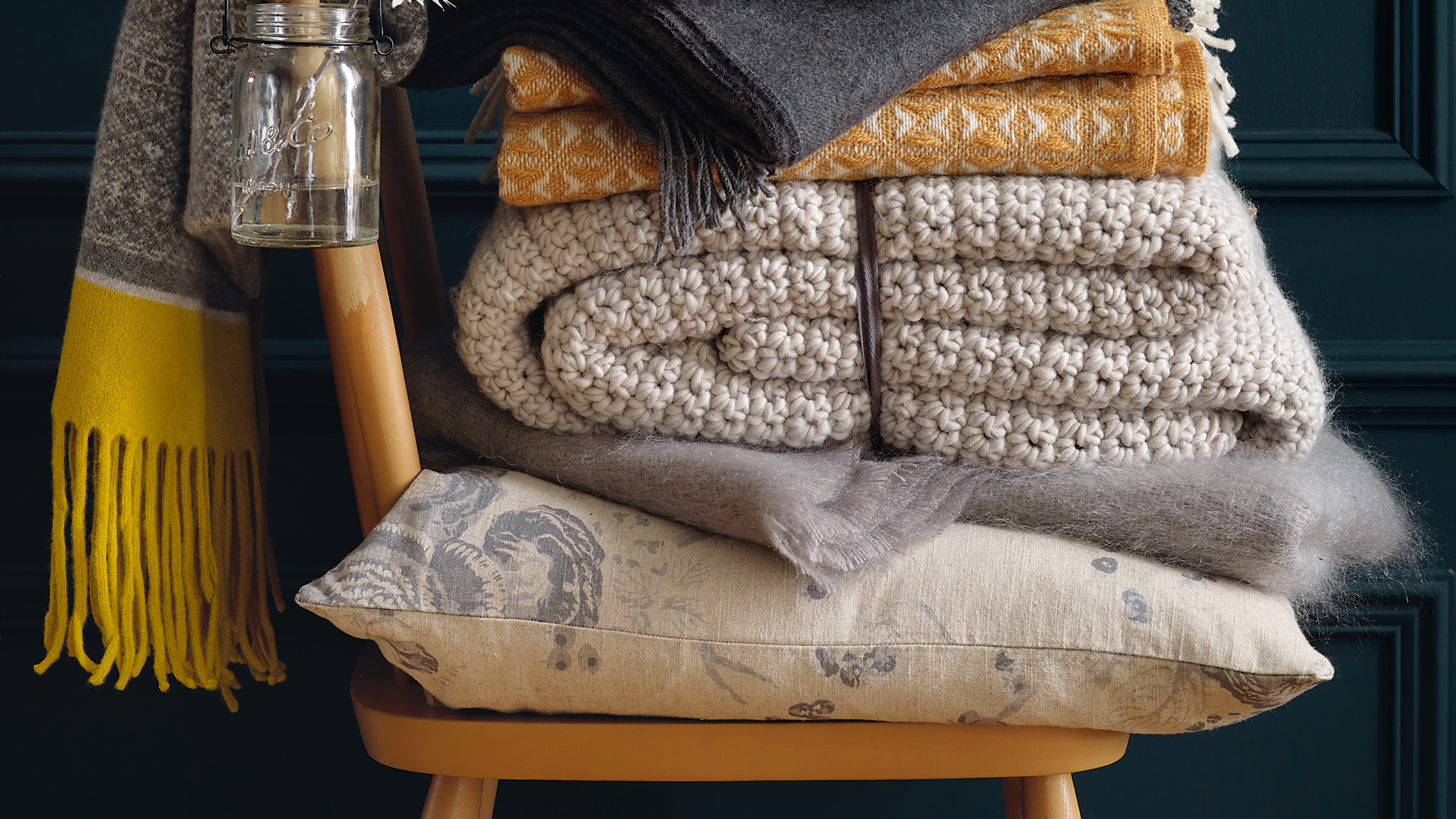
Welcome extra layers to sofas, armchairs, and beds when the temperature drops. All the better if one of those layers happens to be one of the best electric blankets. This action may not make the wider room feel warmer but it will most certainly make you feel instantly warmer within the room, as will wearing the warmest leggings and cosy sweaters.
"Social areas can become chilly quite easily during the colder months, so it is important to equip them with homely soft furnishings to ooze comfort and snug vibes," advises Sam Baldry, head of design at Swoon.
"Consider creating a basket or box full of warm throws for your lounge, so that when the temperature drops, your guests can reach for a comforting blanket to snuggle up and relax under. Choose a selection of soft cotton velvet throws in a range of hues that coordinate with your current colour scheme."
3. Keep the oven door open after cooking
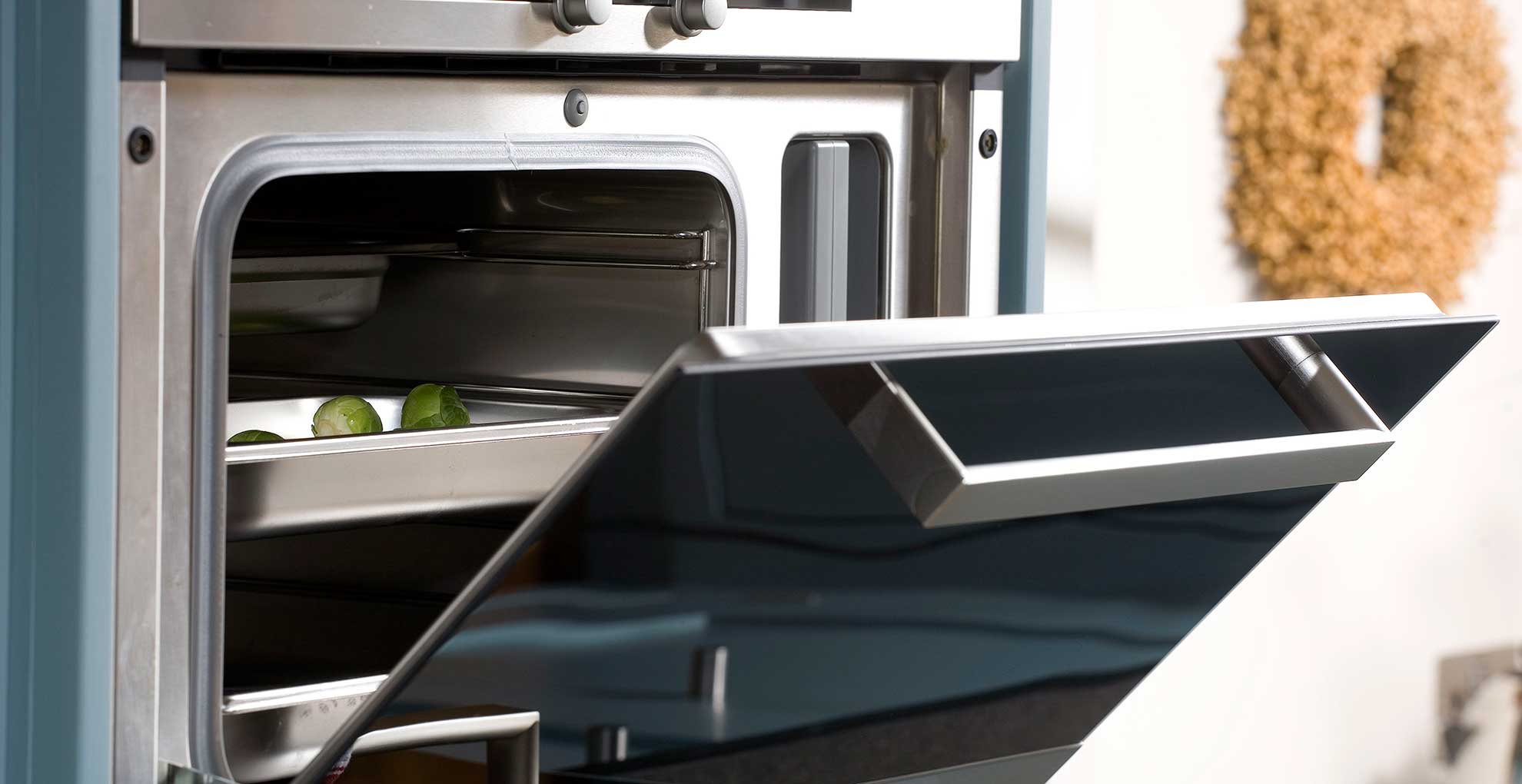
During the colder months, we're more likely to crave hot meals, as opposed to summer salads, therefore ovens are used more frequently. It may sound bonkers but this heat source has huge potential to keep you warm, why let it go to waste after whatever you are cooking has been prepared?
Switch the oven off but leave the door open to benefit from the residual heat inside. "If you’re using the oven, instead of closing the door once your food has cooked, leave the oven door wide open and this will project heat into the surrounding areas," explains Chris.
This is a simple but oh-so-effective way to make more of the heat you're already generating – this is also a great way to dry clothes indoors in the winter months.
If you're using this handy hack it might be worth cleaning the oven a clean first because you don't want to spread any unpleasant smells around the room.
4. Insulate floorboards
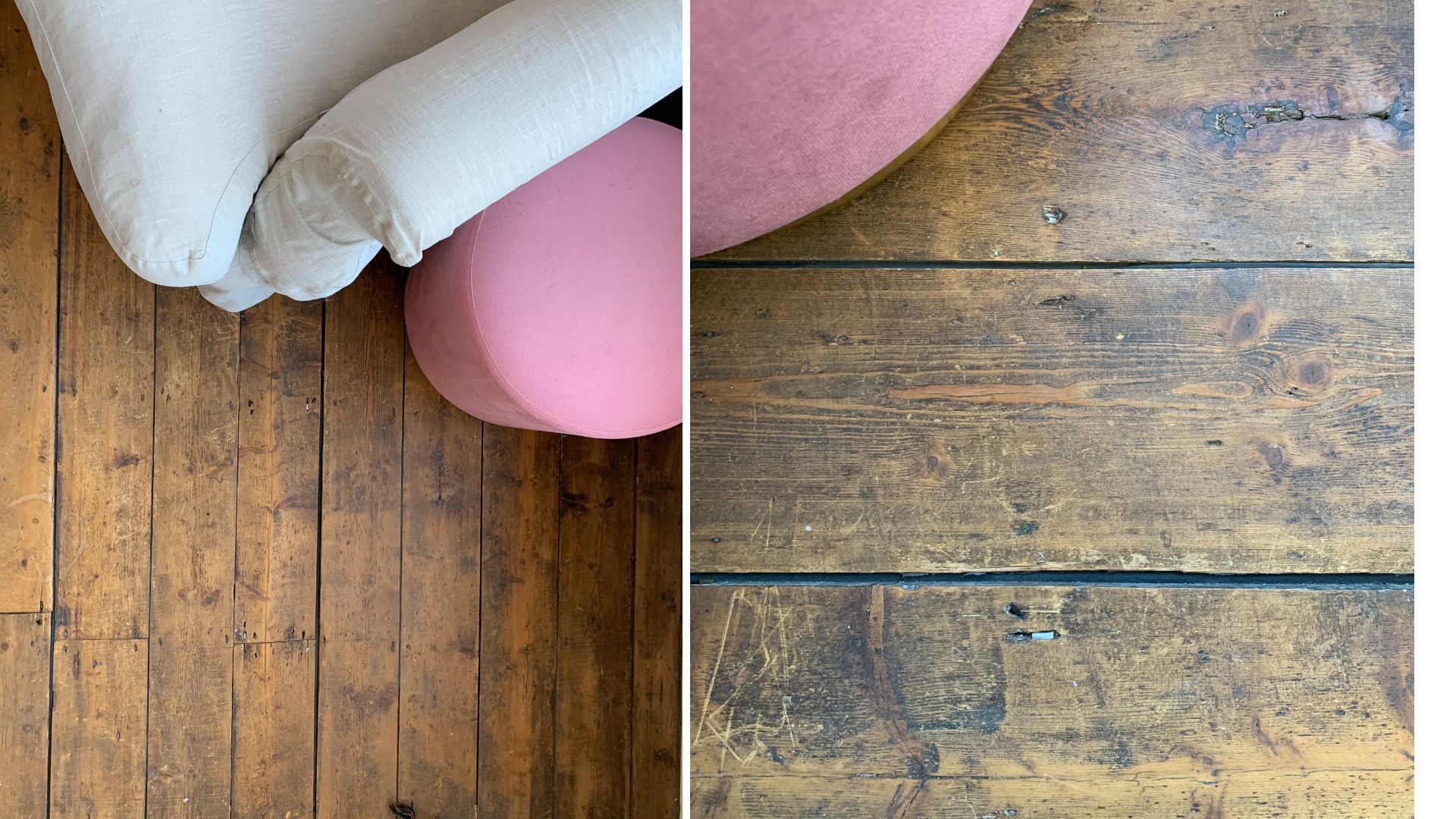
My exposed floorboards after using DraughtEx to fill the gaps
Exposed, original floorboards may look charming but they can be a nightmare when trying to retain heat in a room. Look to add insulation, which you can do yourself with ease and at very little cost as I found out myself last year.
The easiest and most effective solution is to use a draught-excluding solution that is pushed in between the gaps in the floorboards to prevent draughts and keep the room feeling warmer.
I can personally recommend DraughtEx, £29 at Amazon, a plastic-type cord to fill floorboard gaps – available in various widths to suit. The roll is supplied with a handy tool that makes feeding the rubber tape between the boards an easy task.
Speaking from personal experience, I know how effective floorboard insulation gap filler can be in making a room feel instantly warmer because I used it on my exposed floorboards last winter...
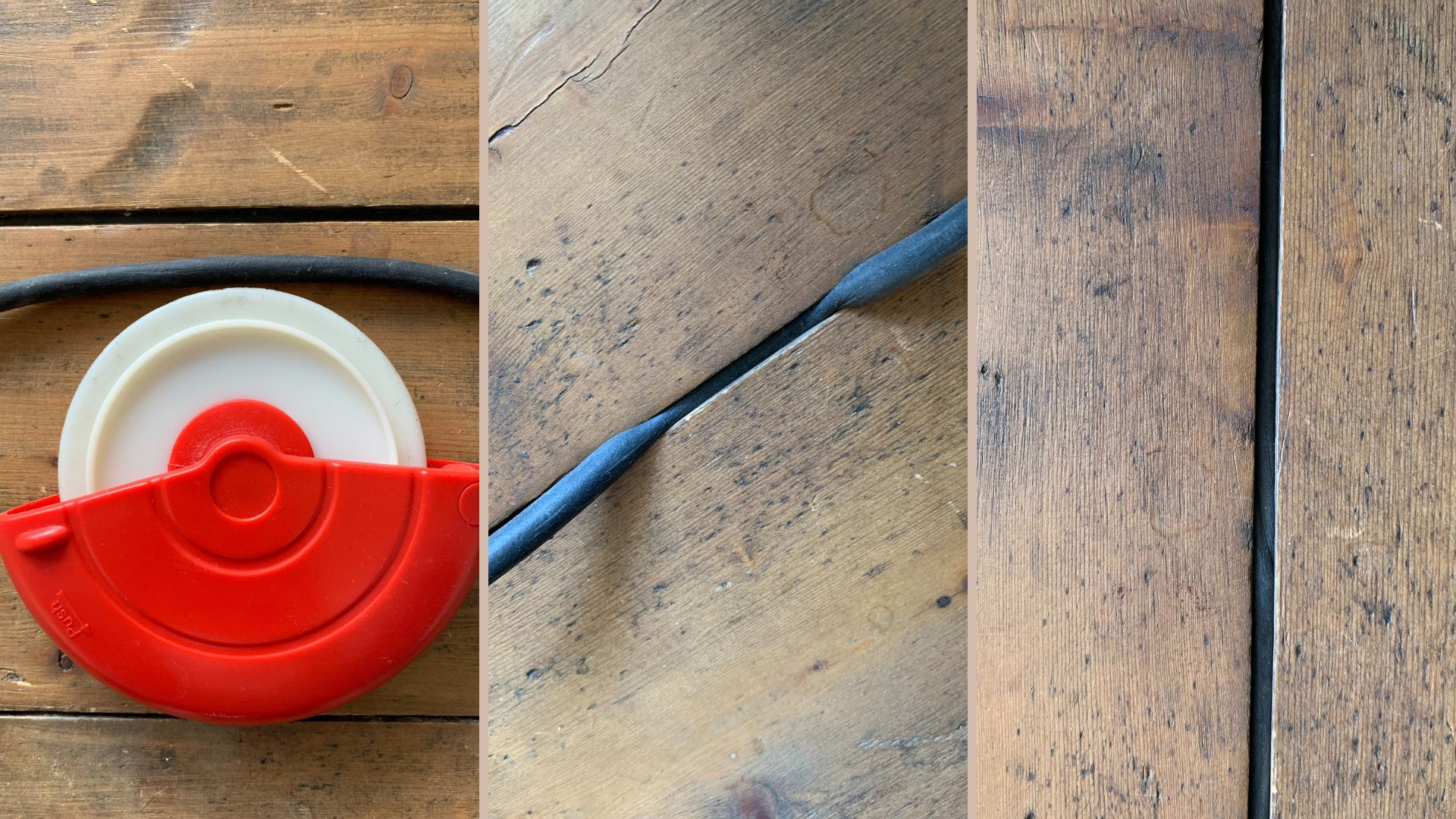
5. Layer floors with rugs
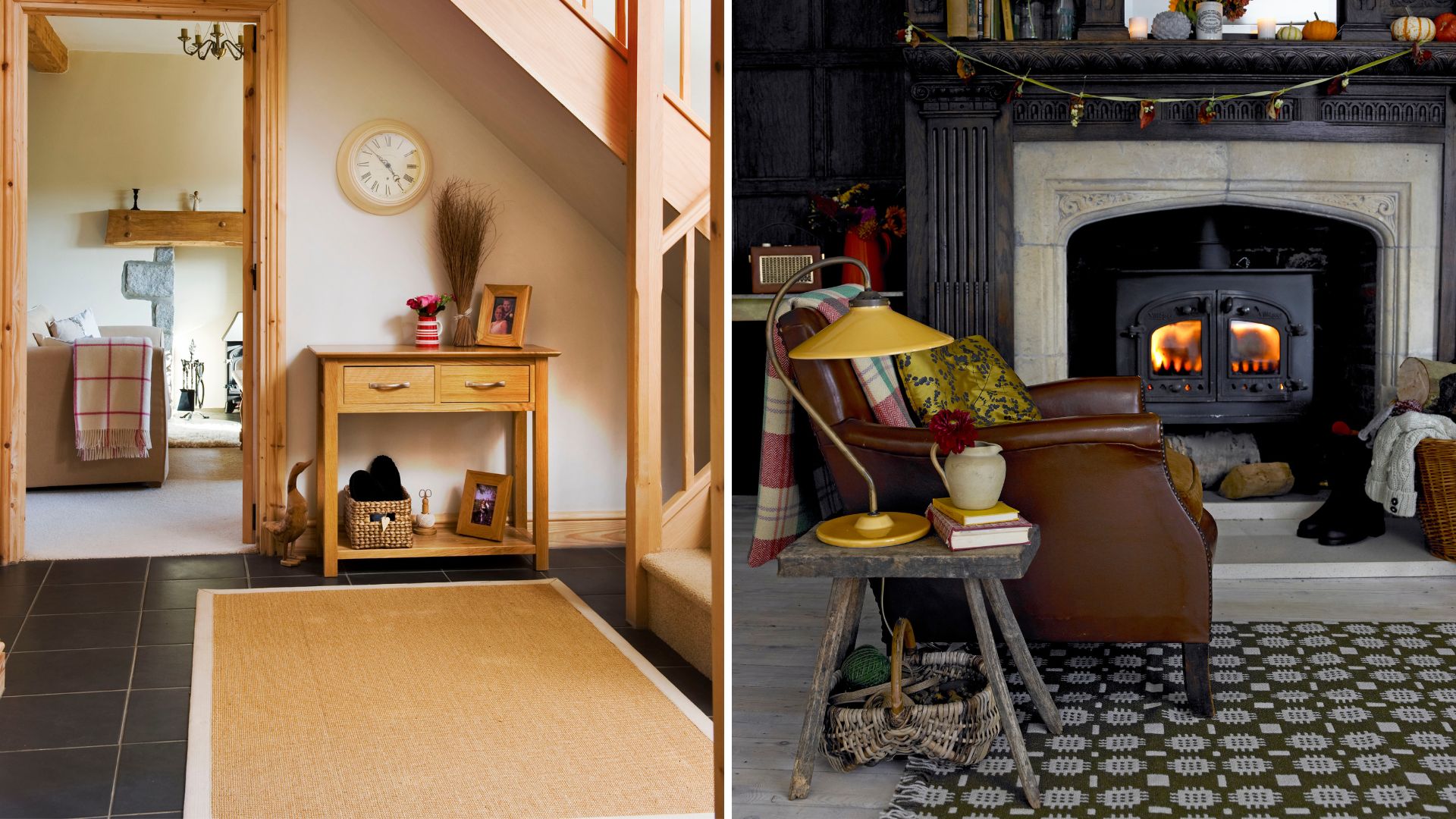
Another easy way to reap the instant benefits of insulation underfoot is by layering floors with rugs. "As so much heat can be lost through the floor it’s important to ensure your rooms are well equipped to handle the cold weather," says Ray Jones, flooring expert at SCS.
"Carpet is an ideal solution for this as it’s a poor conductor, meaning hot air will struggle to escape and cold air will become trapped in its fibres. However, if you do have hard floors but would like to improve heat retention, a good rug can help towards that goal. Of course, it won’t be as effective as a fully carpeted room, but you definitely should notice a positive difference after laying it.”
When choosing a rug look especially at wool rugs because the insulating properties of wool mean that the humidity levels are balanced because the fibres of the material absorb the coolness and moisture content in the air.
Be sure to follow our guide on how to clean a rug to keep it feeling like new all winter.
6. Keep the blinds and curtains drawn
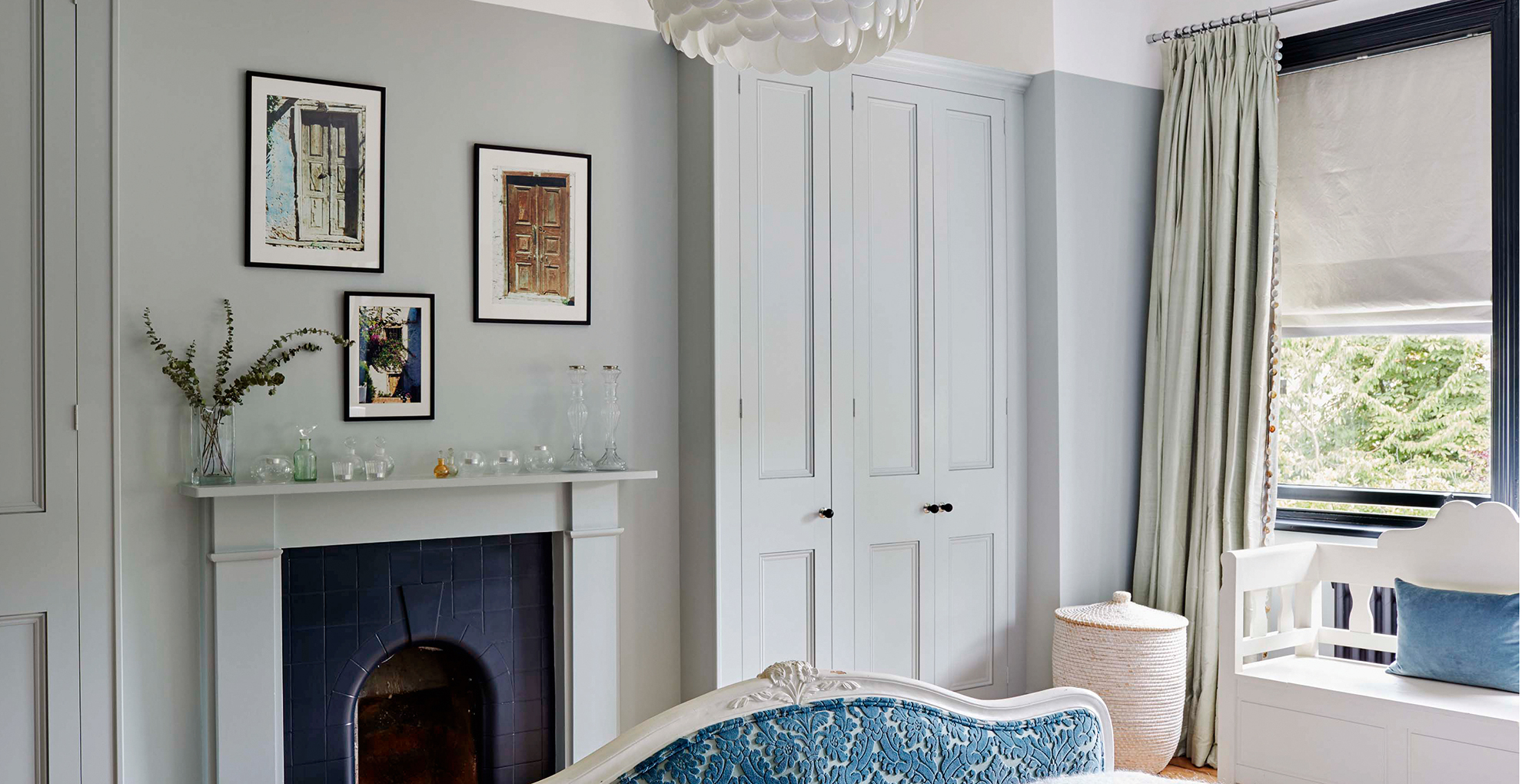
Windows offer an expanse of glass area that can prove hugely problematic when it comes to retaining heat in any room. "Around 10-30% of a home’s heat is lost through windows, even if they are fitted with double glazing," explains Dave Downing, managing director at Conservatory Blinds 4 Less.
Consider keeping the window panes covered whenever they are not being directly heated by natural sunlight. Incidentally, this trick is used in reverse when looking at how to cool down a room in summer.
“Keeping your blinds cold can significantly reduce heat loss,” says Dave. “We recommend closing your blinds when the sun sets and the temperature drops. Keep blinds closed as much as possible on miserable days with limited sunlight to prevent the escape of heat. On brighter days, open your blinds to allow the sun to passively heat your room.”
7. Block fireplaces
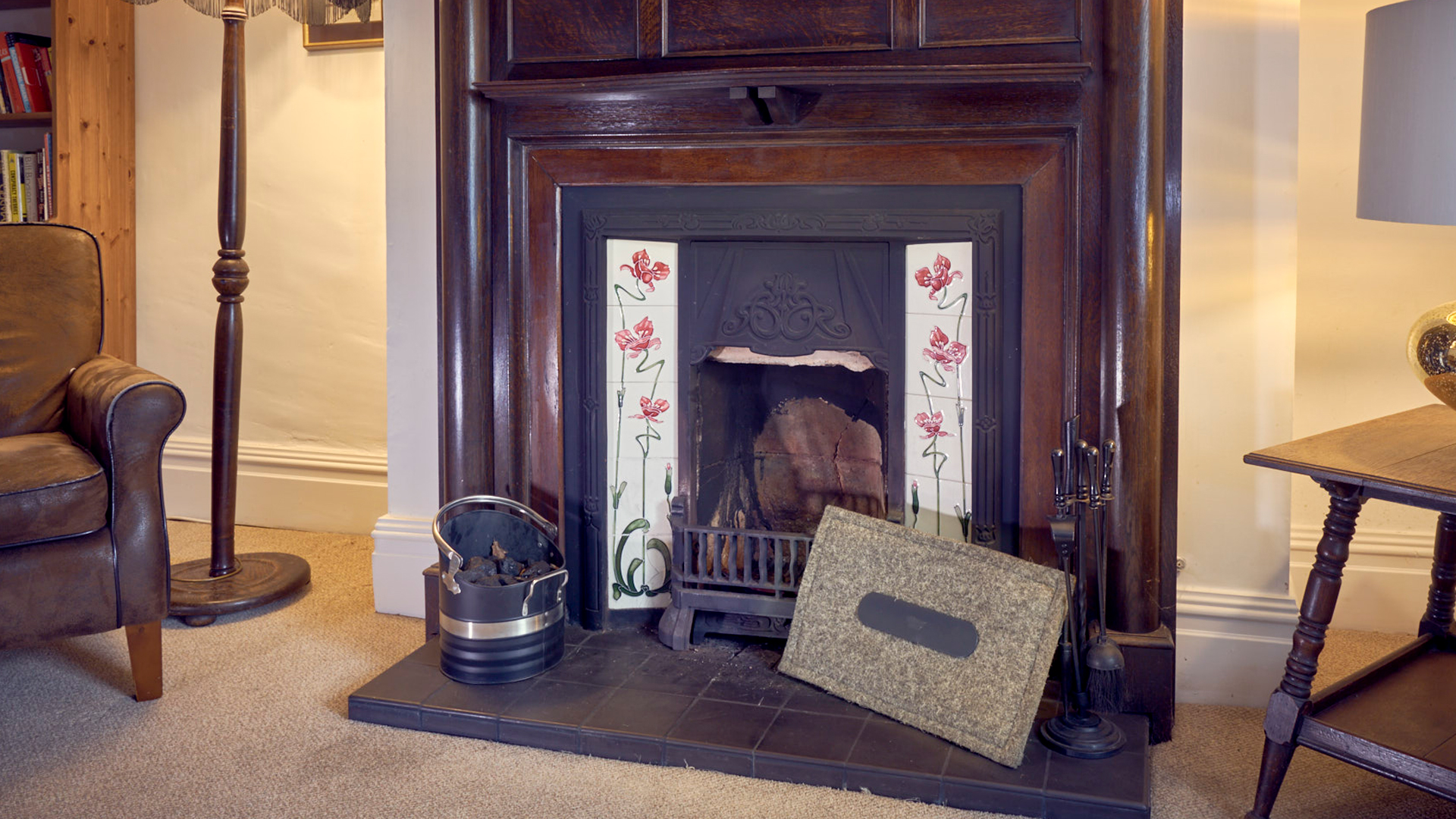
Whether in a living room, bedroom, or kitchen, a fireplace may inject instant charm into the aesthetic but it can also be the cause of unwelcome draughts.
An open fireplace with an exposed chimney breast, whether working or not, allows the perfect place for any warm air to escape. Draughts can also create an influx of extremely cold air, which reduces the temperature within the room.
An old-fashioned method of blocking the fireplace is using an old pillow or cushion that can be gently pushed in place to seal the void – of course, if your fireplace is a working one this will be removed before being used again.
For a more modern take, we recommend using Chimney Sheep, £27 at Amazon, a product specially designed to be easily placed to block the exposed chimney breast cavity.
"The removable chimney draught excluder is made with a thick layer of felted Herdwick wool and ensures households with open chimneys are heated as efficiently as possible by keeping the heat in and cold draughts out," explains Sally Phillips, the founder, and director of Chimney Sheep.
"Once inserted the draught excluder blocks airflow in and out of the chimney, while the properties of the wool naturally permit sufficient ventilation at the same time."
8. Insulate windows
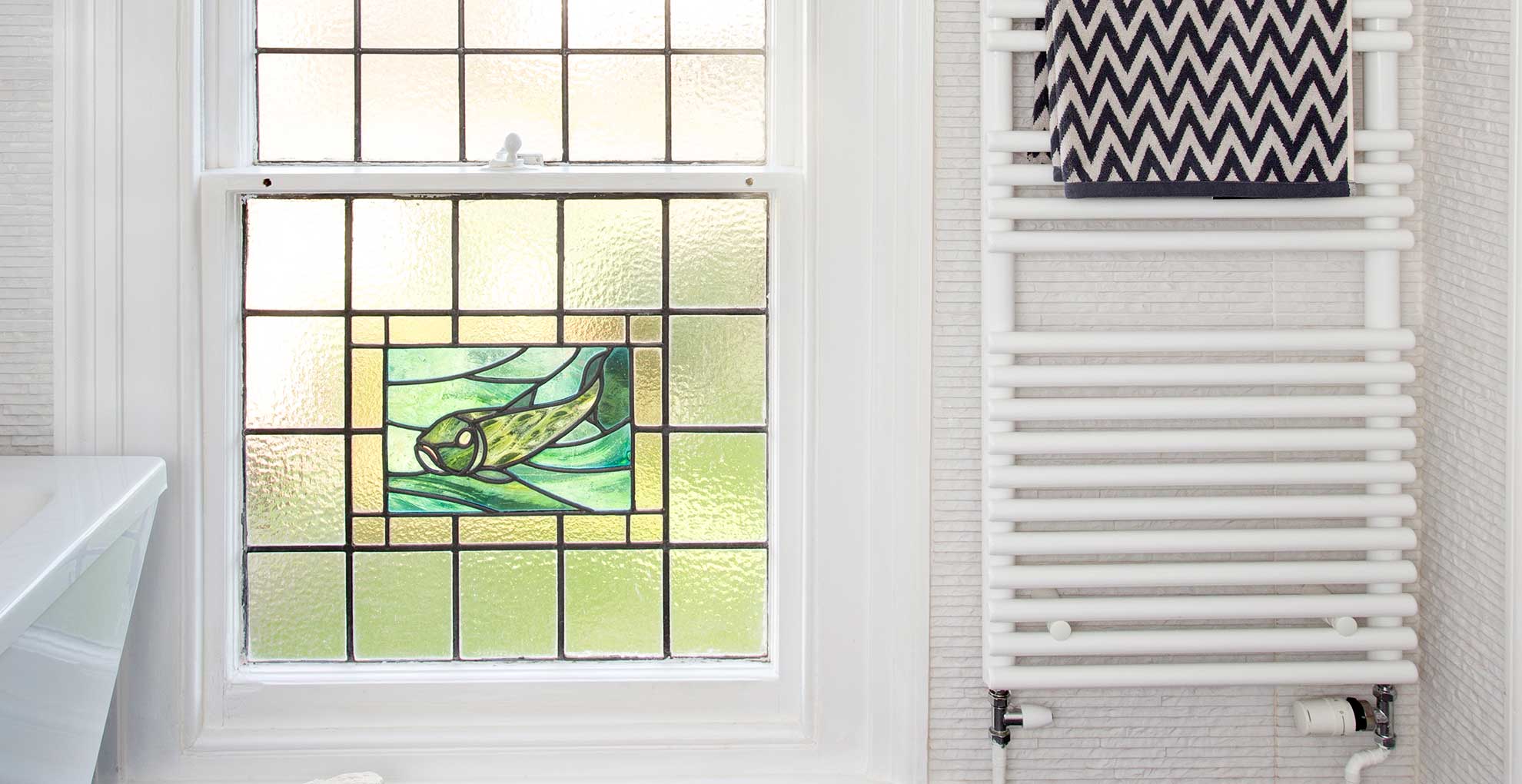
Windows can be a big culprit for letting cold air into your home, you can find a draught by feeling around your window for cooler air and looking to block the problem directly at the source.
"If you identify your home’s windows as a problem area you address the problem affordably," says Ryan Calvert, product manager at Hiatt Hardware. "Self-adhesive weather strips such as the Stormguard Ultraseal Window Gap Draught Seal are cheap to buy in DIY stores, the very simple design of polyurethane foam helps to prevent the movement of air from the outside."
"These strips can be cut to different lengths to accommodate your window size but it’s important that you choose the correct width. If the width of the insulation strip is too wide, it can prevent your window from shutting correctly, only causing the problem to worsen. Similarly, if the strip is too thin, the strip won’t keep draughts out and therefore won’t improve your energy efficiency."
Stormguard Ultraseal Window Gap Draught Seal, £2.94 at Hiatt Hardware
As recommended by Ryan, this effective material can fill 1-5mm window gaps to put a stop to unwanted drafts.
9. Seal any hidden gaps
Any areas exposed to drafts instantly let cold air in, it's therefore imperative to ensure all edging and wall gaps are sealed around extractor fans, vents, doors and windows in every room.
"Air leaks can result in between 20-50% of energy being wasted, which is something we all want to avoid when energy costs are rising," says James Longley, Managing Director at Utility Bidder. "If you have older windows or you have noticed draughts entering the property, you need to repair them as soon as possible. There are simple ways to do this, including fitting draught-proof strips, using a sealant."
Consider filling gaps with foam seal or caulk to stop a constant filter of cold air from flowing indoors from outside. This is also preferable for keeping spiders out of the house, so is always a good idea.
Everbuild Caulk Once Premium Quality Acrylic Caulk: £5.99 at Amazon
For sealing gaps around your home to keep the heat in, there really isn't anything better for the job than caulk. It's super quick and easy to use.
10. Seek additional draught excluders
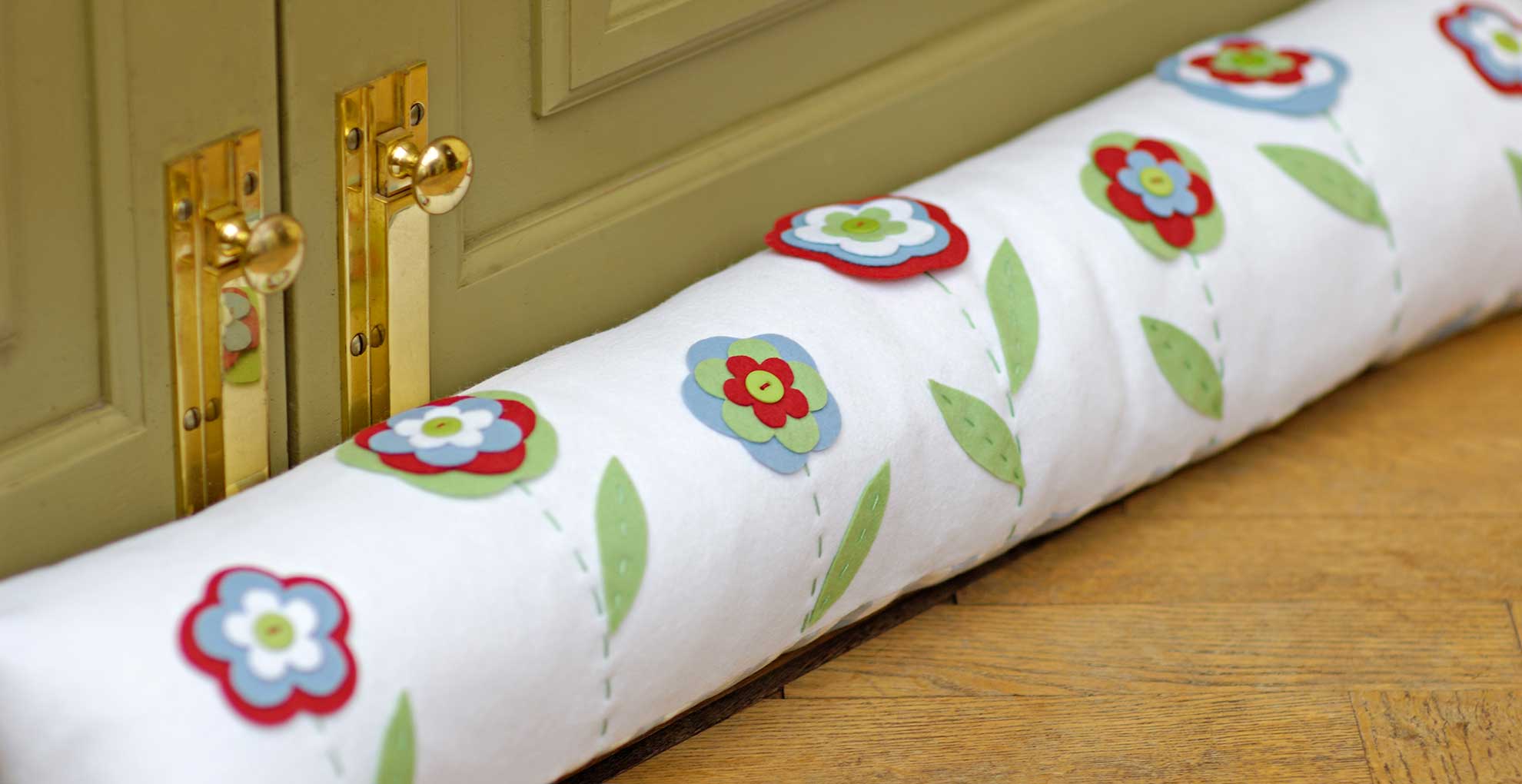
Think about adding additional draught excluding measures in the short term. Reduce any draughts by using draught excluders around doors and even windows – old blankets or towels are a great budget solution to create a barrier to stop the cold air from entertaining the room.
"When tackling the gap at the bottom of your door, you can install a door brush or door seal to prevent any unwanted air from getting inside," suggests Ryan. "Draught excluders are also a great, cost-effective option that, in extreme cases, can reduce heat loss by up to 30%."

RRP: £6.50 | This robust, heavy-duty aluminium draught excluder is built to last. The more permanent solution comes with plated screw fixings and pre-drilled adjustable fixing holes, to ensure easy installation. It effectively seals gaps up to 25mm, providing optimal draft exclusion.
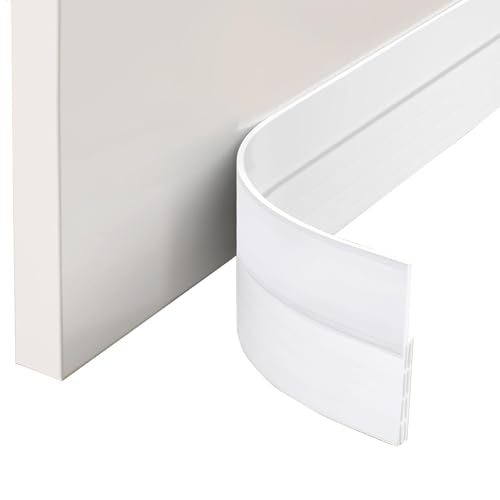
RRP: £9.99 | This all-weather, rubber bottom seal strip is not only stops draughts but it also helps soundproofing from one room to another. The 1m length strip adheres directly to the bottom of the door.
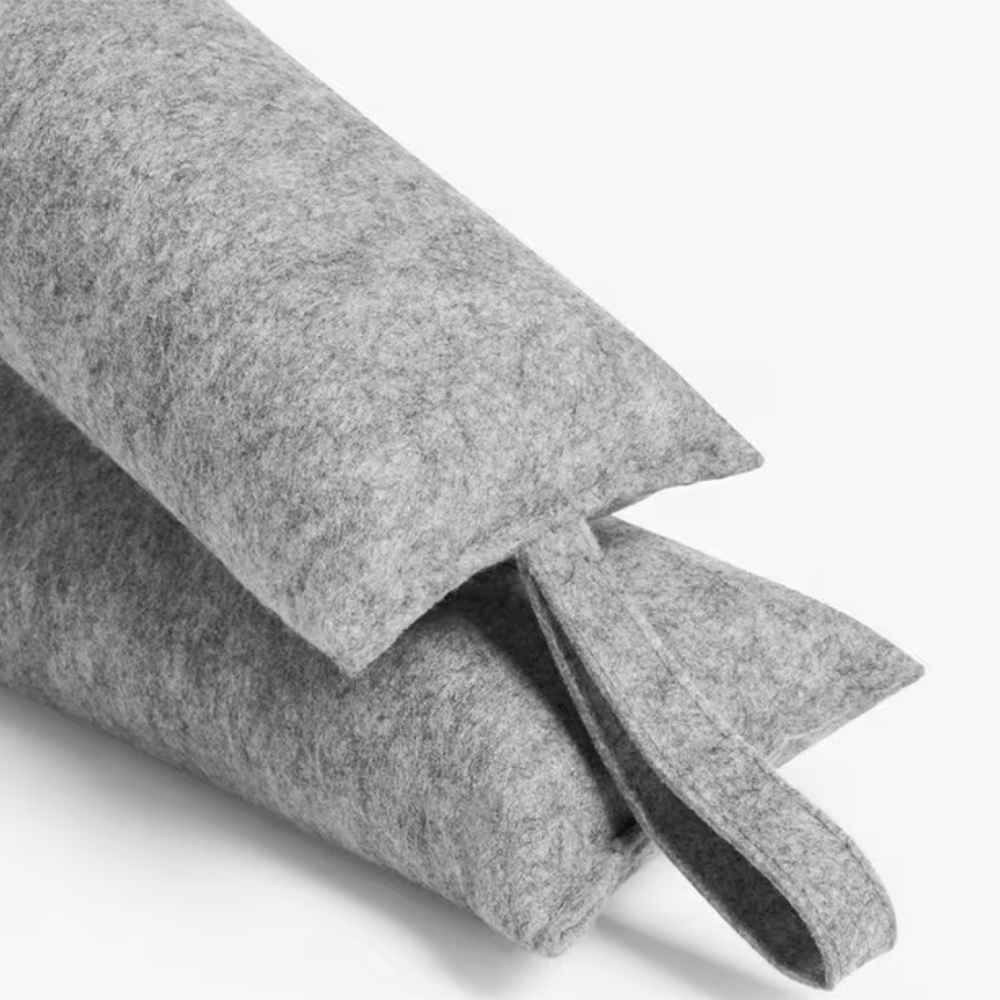
RRP: £20 | Understated but stylish enough to do the job with a little flair, this moveable draught excluder is easy to use against any door as when required.
11. Hang a door curtain
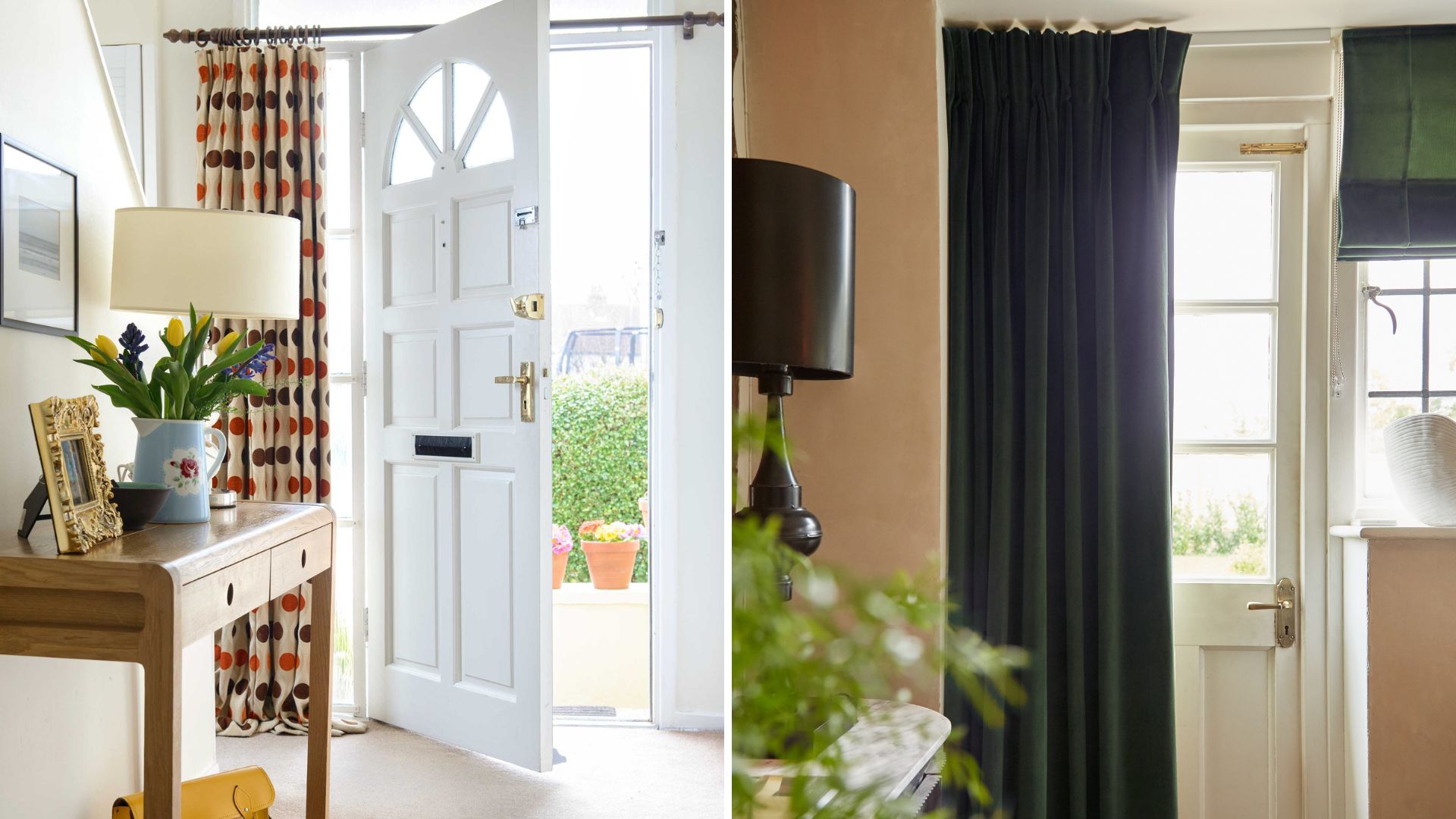
In addition to traditional draft excluders, you can take draught reduction across doors one step further by hanging a more robust door curtain.
"Consider using curtains with thermal linings across doors," suggests Victoria Walker, Hillarys' product manager, "A door curtain is ideal for creating a snug and inviting atmosphere."
"Opt for naturally thicker fabrics like velvet and boucle, especially when paired with a thermal lining. These materials excel at keeping the warmth inside and also serve as excellent barriers against noise and light, making them ideal for street-facing doors."
12. Keep doors closed to trap heat
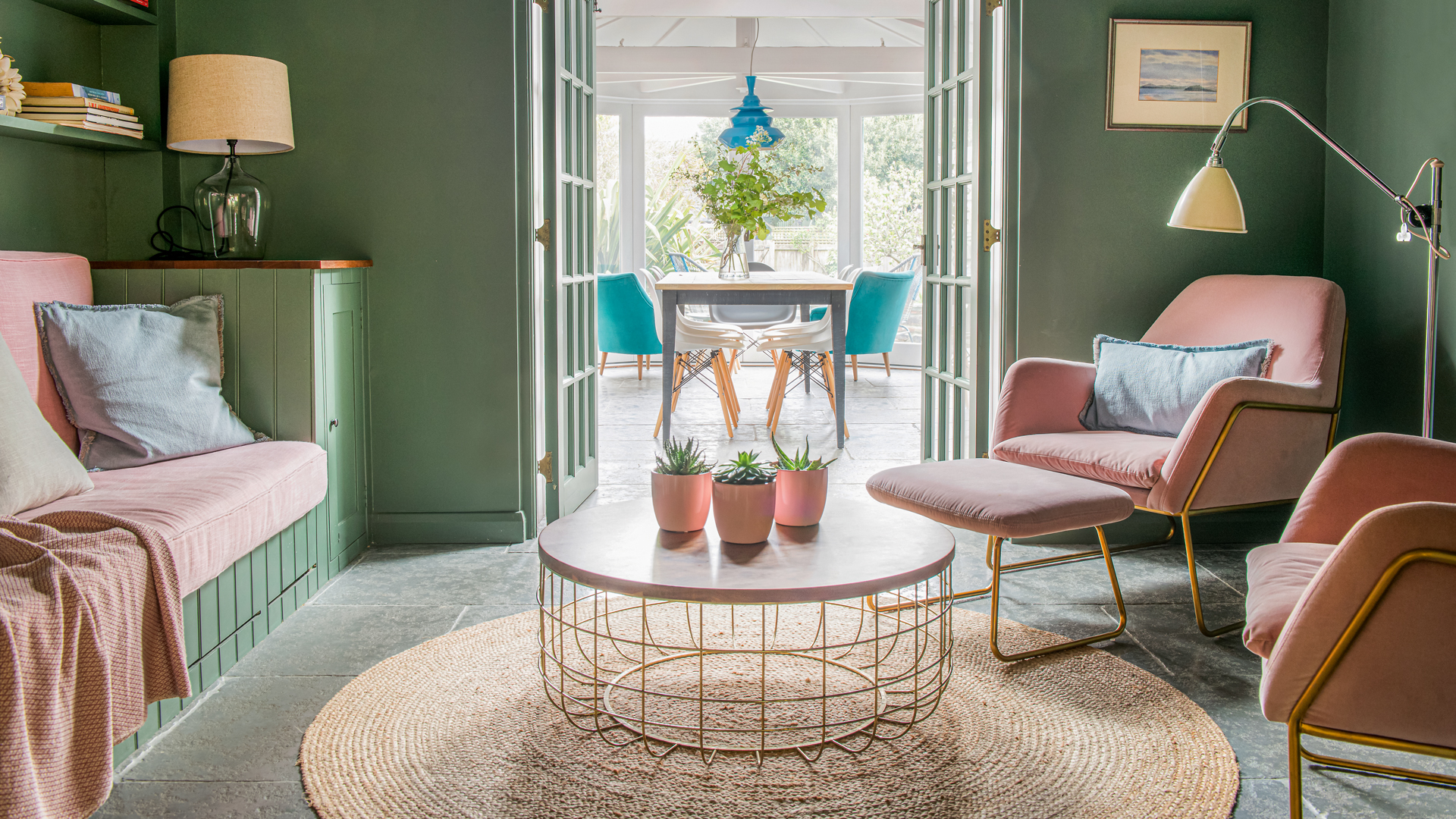
There's no real need to heat every room in the house if you don't use certain rooms frequently enough. If this is the case save yourself money and energy by turning the radiators off in these rooms and shutting the door to keep the room closed off to avoid the cold creeping into the rooms being heated.
Make a habit of closing the door on the rooms you are using the most to retain the heat from any heating sources you have in use.
“We often hear that people use portable electric heaters to heat the room that they’re in rather than heating the whole house," says Dr. Steve Buckley, head of data science at Loop. "The principle is sound, only heating the rooms you’re using can lead to big savings when compared with heating the whole house."
13. Redirect heat with a fan
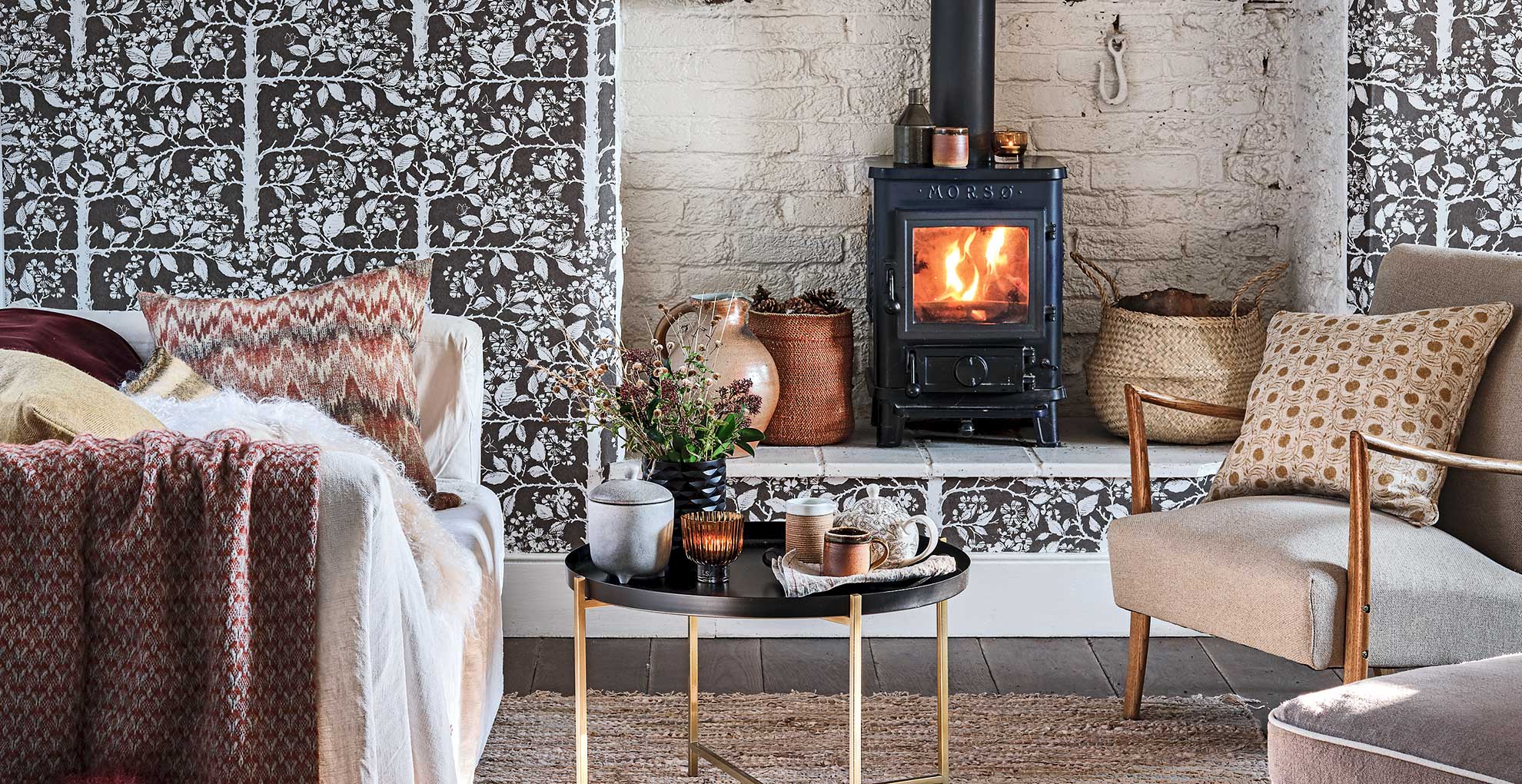
If you are lucky enough to have a log-burning stove that is all set to keep you warm this winter you could still benefit from a handy hack that redirects the heat to ensure none of it is potentially wasted. A simple stove fan circulates the hot air more efficiently so the whole room will feel the benefits, rather than just the areas directly surrounding the stove.
Requiring no power source of its own, a stove fire fan is propelled by the stove’s hot air as the temperature rises. It sits on top of your stove spinning freely and silently, evenly distributing the heat, to save wasting energy and money.
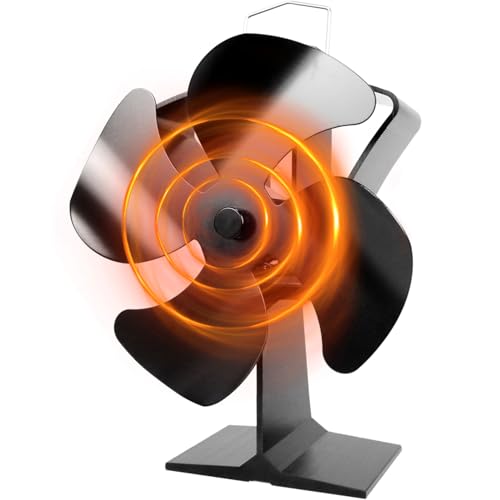
RRP: £25.99 | This heat-powered wood/log burner fan works on the same principles, only this model has 4 blades. The generous 21cm eco-friendly heat circulation tool is a must-have for those looking to make the heat circulate faster.

RRP: £47.99 | Featuring 3 blades this premium 18cm tall fan is for use with log burning stoves. The built-in 'thermoelectric module' converts heat from the log burner into electricity, causing the blades to spin in order to distribute hot air around the room. It can circulate up to 5 m3/m of air.
14. Bleed radiators
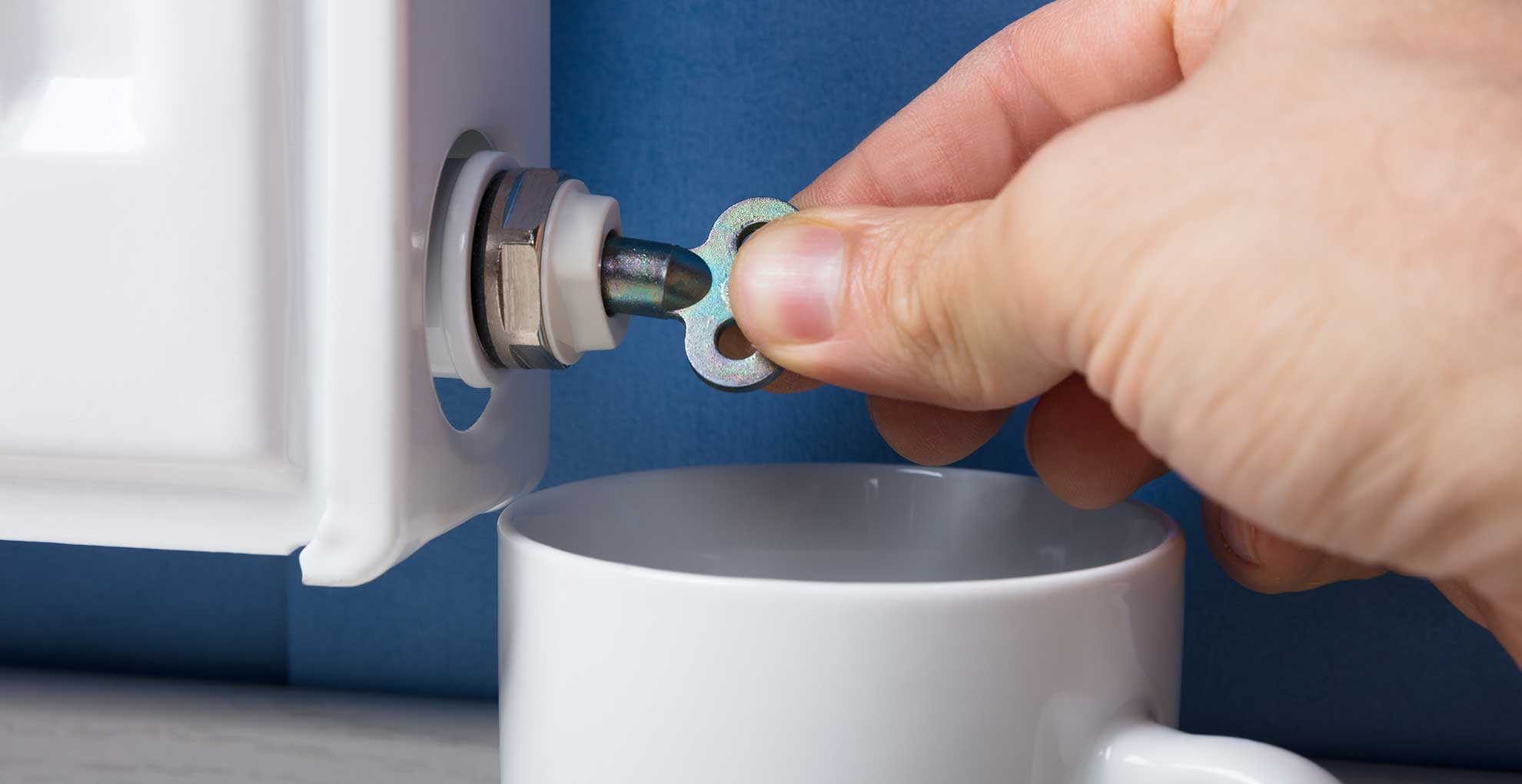
Another free and relatively simple solution is to bleed the radiators to ensure your heating is working to maximum capacity, so no heat is wasted because of an inefficient heating system.
"Over time air bubbles can accumulate within radiators, meaning that they do not heat up as effectively as they should," explains Alison Maclean, a property expert at St. Modwen Homes.
"By bleeding the radiators you can remove the excess air and improve the efficiency of radiators across your home to improve your home heating without having to turn up the thermostat."
It’s not the same as draining or flushing your central heating system, but it is a quick and easy task that pretty much anyone can do. All you need is a key. If you don’t have one, you can get them in most hardware DIY shops or on Amazon – like this recommended Radiator Bleeding Key for £4.99 at Amazon.
Alison shares her simple steps for bleeding a radiator...
- Turn your boiler off: "Do this first of all and then allow sufficient time for any radiators to cool, ensuring you’re not coming into contact with boiling water."
- Open the bleed valve: "Use your key to turn the valve a quarter turn anti-clockwise. Position a towel or bowl underneath the valve just in case water comes out."
- Close the bleed valve: "Don’t worry about the hissing noise, it’s just air escaping. Once the hissing stops, close the valve again."
15. Cover the letterbox
Letterboxes are an unsuspecting source of permitting cold outside air into our homes, creating chilly drafts that waft throughout the entire house. "If you have a letterbox attached to the exterior of your home, tape up the letterbox in your door as this is often a way for heat to escape," adds Chris.
"If your letterbox is slightly aged and has become damaged as a result - you can also expect some repetitive and irritating flapping," adds Ryan. "Installing a new letter plate with a dedicated flap or brush can prevent heat from escaping."
Of course, if you do cover up your letterbox ensure you have an alternative outlet for mail to be delivered, such as a wall-mounted post box instead.
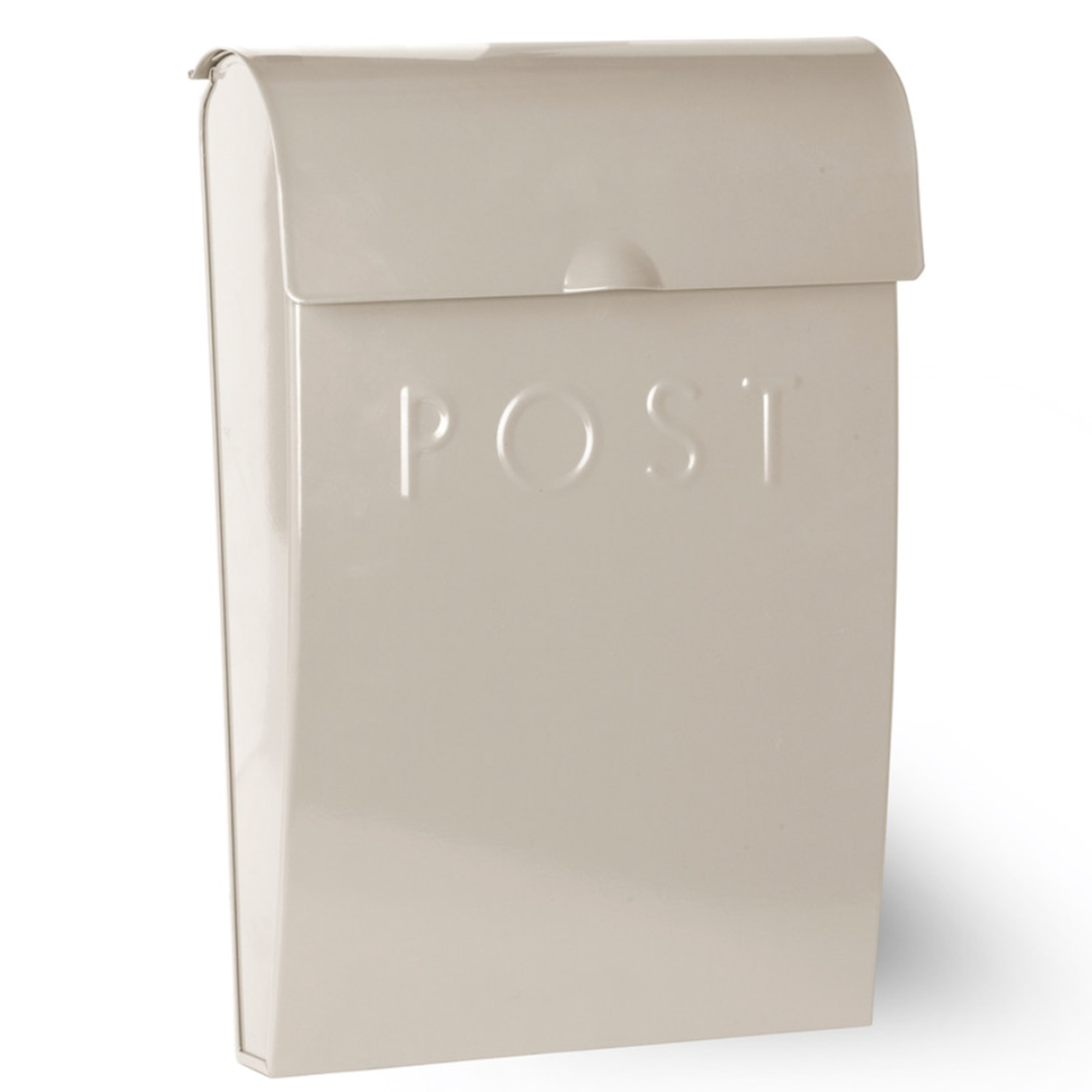
RRP: £40 | Garden Trading is renowned for making country-style basics that oozes understated style so that even the most functional home accessories feel fabulous. This post box is a fine example. The slim, wall-mounted box is ideal for storing post when there letter box isn't in use.
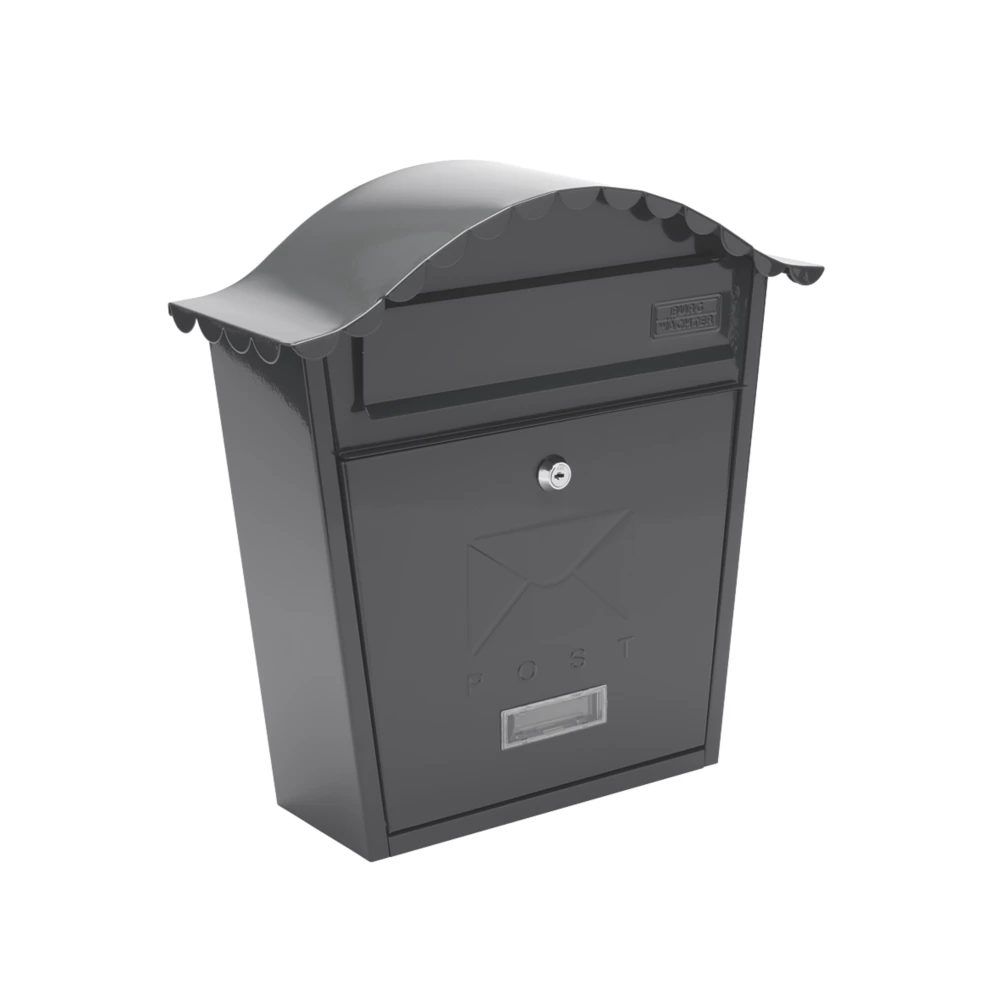 Quaint shape
Quaint shape
RRP: £35.99 | The sculpted shape gives this postbox traditional charm. The Anthracite Powder-Coated finish gives the box a classic appeal that is ideal outside many different styles of property.
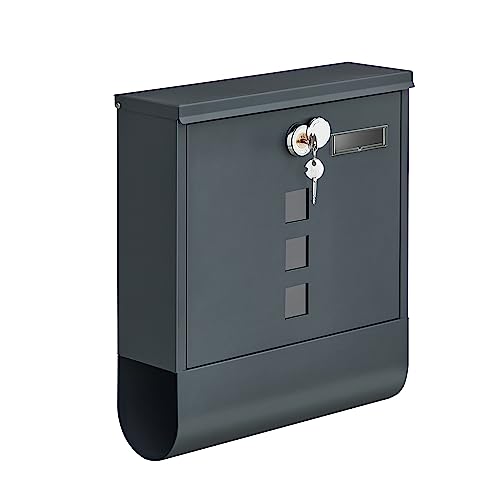
RRP: £27.99 | More than merely a place for post this wall-mounted post box also features a handy newspaper compartment. With a rotating lid, viewing window and name holder this is a well-thought-out design that would be ideal or a more contemporary dwelling.
FAQs
How do I keep my house warm in winter without spending money?
The easiest way to keep your house warm without spending money is to first prevent draughts. This stops any heat from escaping but it also prevents icy cold air from entering your home. While you will need to spend money to buy caulk or draught excluding materials this is a little investment for the return you will see, as I mentioned above after using a £30 gap filler on my exposed floorboards.
To embrace cost-effective warming hacks Andrew Haydon, a home improvement expert from Simply Plastics suggests placing tin foil behind the radiator. "If you struggle to feel the benefit of your radiators, try sticking some tin foil behind them. This will help to reflect some of the heat towards your room and is cheaper than reflector foil," Andrew explains.
Another one of his budget suggestions is to use rolled-up towels to block out draughts, assuming you haven't used your old towels in your garden already.
"If you don’t have a draught excluder, you make one for free by rolling up an old towel or bedding and placing it at the bottom of your doors. This will help keep any heat you’ve accumulated from being lost through large gaps under your doors and will help stop any cold air from blowing in."
Andrew continues: "If you have an old pair of tights or long socks, you could also make a DIY excluder by filling it with old socks or other clothes that can’t be donated - perfect for keeping warm and cutting down on waste.
How can I keep my house warm in winter naturally?
Improving your home's insulation is the best way to keep your house warm naturally in winter. Adopting better insulation is the most efficient way to keep energy costs low by saving on high heating bills.
"Consider adding thermal linings to your curtains or Roman blinds to enhance their insulating properties," suggests Victoria. "These specially designed linings provide an extra layer that significantly improves thermal resistance. For Roman blinds, a performance lining can reduce heat loss by up to 21%."

Tamara is a highly experienced homes and interiors journalist with a career spanning over 22 years. Now the Lifestyle Editor of womanandhome.com, she previously spent 18 years working with the style teams at Country Homes & Interiors and Ideal Home. With these award-winning interior teams, she gained a wealth of knowledge and honed her skills and passion for styling and writing about every aspect of lifestyle and interiors.
A true homes and interiors expert, Tamara has been an ambassador for leading interior brands on multiple occasions, including appearing on Matalan’s The Show and presenting at top interior trend forecasting events such as the Autumn Fair and Spring Fair.
-
 Adidas Sambas have been trending for months now - but Fearne Cotton just wore hers in the most refreshing way
Adidas Sambas have been trending for months now - but Fearne Cotton just wore hers in the most refreshing wayWe’re still a few months away from sandal season and Fearne Cotton has inspired us to reach for our Sambas so much more.
By Emma Shacklock
-
 I'm a former beauty editor who travels for a living - these are the 9 multitasking products I would never leave home without
I'm a former beauty editor who travels for a living - these are the 9 multitasking products I would never leave home withoutI pack and unpack 100 times a year, so only the best of the best makes it into my beauty bag
By Lydia Swinscoe


